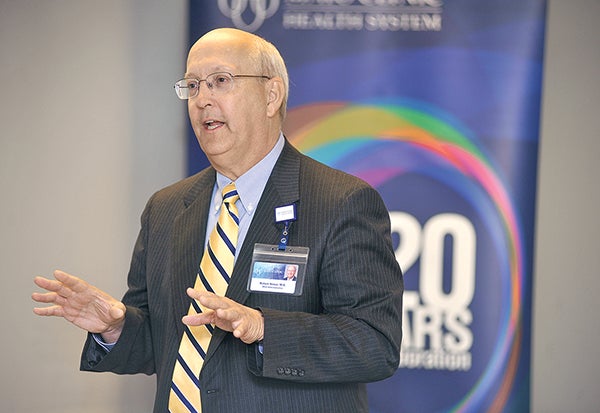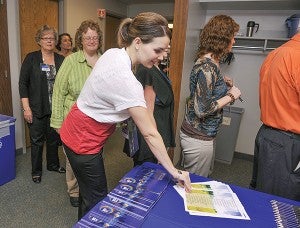Mayo network celebrates birthday
Published 6:58 pm Saturday, September 15, 2012

Robert Nesse, M.D., CEO for Mayo Clinic Health System, speaks to Mayo Clinic Health System in Austin employees during a 20th anniversary celebration of the formation of Mayo Clinic Health Systems Friday morning. Eric Johnson/photodesk@austindailyherald.com
Dr. Robert Nesse said no one could have imagined two decades ago what Mayo Clinic Health System has become.
The CEO of the entire medical network said they have a lot to be proud of as it celebrates its 20th anniversary this year.

Jennifer Minear reaches for a handout as her other staff at Mayo Health System in Austin attend a celebration of the 20th anniversary of the Mayo Health Systems formation Friday. Eric Johnson/photodesk@austindailyherald.com
“I don’t think we anticipated the growth,” Nesse said at an internal celebration in Austin on Friday.
The network of hospitals began in 1992 with a six-physician practice in Decorah, Iowa. Exactly 20 years later, it now includes 70 locations across Minnesota, Iowa, Wisconsin and Georgia.
“Now at Mayo Clinic, we see about one million patients per year, and 500,000 of those patients are seen in the Mayo Clinic Health System,” Nesse said.
In Austin, St. Olaf Hospital and Austin Medical Center affiliated with the system in 1995, becoming one entity called Austin Medical Center — Mayo Health System. Since then, the medical center has gone from 26 physicians to over 90, and will soon add nine more as part of the $28-million expansion slated for completion in December. It now has clinics in Adams, Blooming Prairie, Grand Meadow and LeRoy with 850 staff, and in 2011, the medical center changed its name to Mayo Clinic Health System in Austin.
The next step, according to Dr. Mark Ciota, CEO of Mayo Clinic Health System in Austin and Albert Lea, is to transition from affiliation to an actual partnership. Ciota said with an association of hospitals which includes Mayo Clinic, patients have access to Mayo’s resources and expertise from anywhere in the network.
“That’s the exciting thing,” Ciota said. “Certainly we have services we wouldn’t have otherwise, and we have access to care we wouldn’t have otherwise.”
Nesse said while he doesn’t see the network doubling in size, he does see potential for growth within the system, like what’s happening in Austin.
“Whenever we put in place [a quality system and staff], patients are coming here,” he said. “What we’re anticipating and hoping is that people in this community will recognize the expertise we have … and get that care here rather than feel the need to travel to Rochester for it.”





